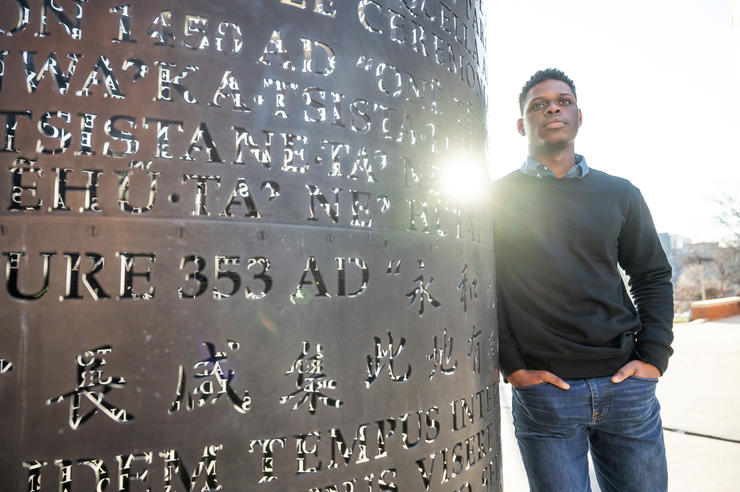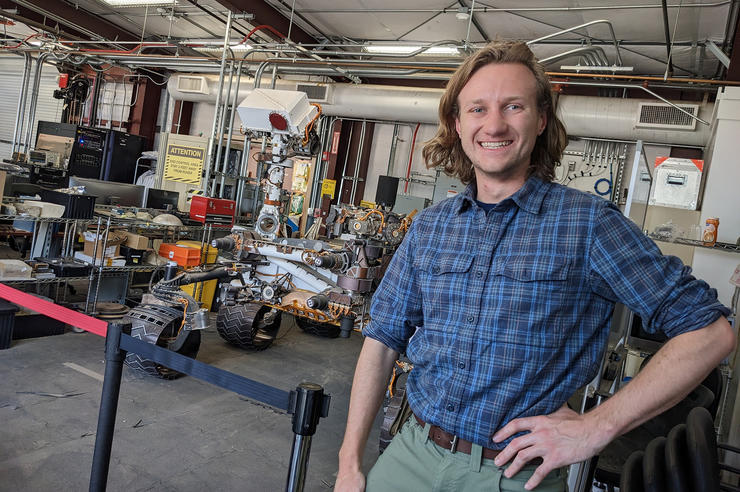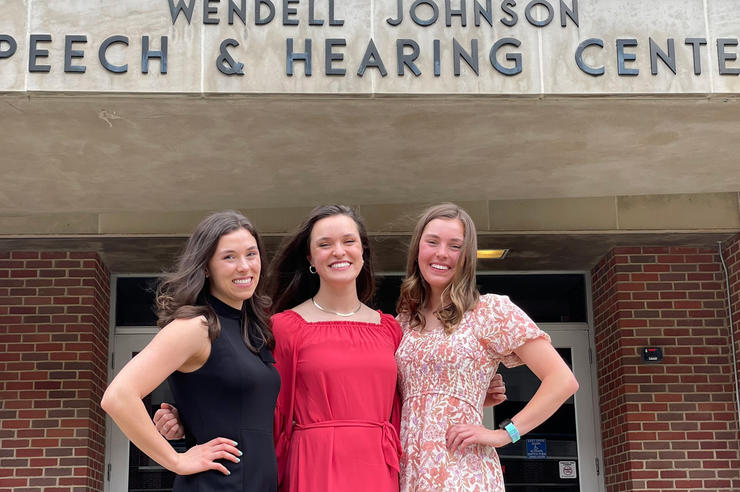Biostatistics unites the Seedorff brothers
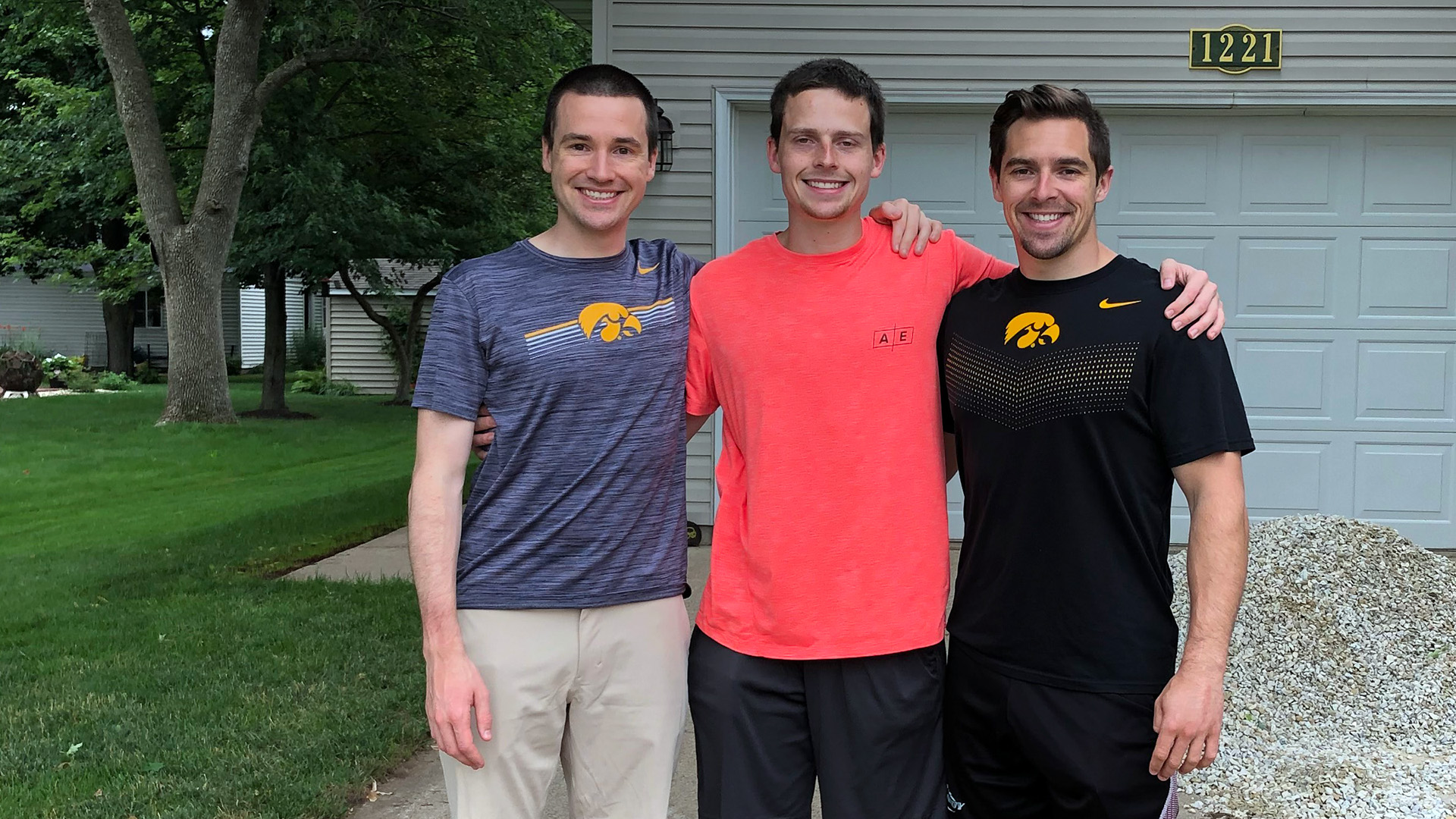
Brothers Michael, Jacob, and Nick Seedorff, pictured at their family home, have all studied biostatistics at the University of Iowa.
Michael works for Google to ensure that the company’s servers are working at their highest capacity and efficiency. Nick is employed by Meta, where his team determines which videos are pushed out to which Facebook users. Jacob is studying how to predict the best course of treatment for individual stroke patients and, for his thesis, developing algorithms and open-source software for efficiently evaluating vast collections of statistical models.
Although pursuing different projects, the Seedorff brothers have something in common besides blood: All have earned—or are currently working toward—a PhD in biostatistics through the University of Iowa College of Public Health.
Fueled by their interests in math and computing and inspired by a family legacy of Iowa Hawkeyes—their mother, father, and multiple extended family members are alumni—the brothers, who grew up in Hiawatha, Iowa, attended the University of Iowa and ended up studying in the same department.
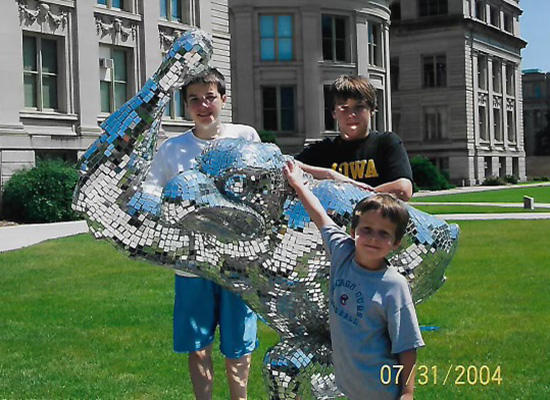
In 2004, the Seedorffs enjoyed a family field trip to Iowa City to visit the Herky on Parade statues.
Michael earned a BA in computer science and linguistics and a BS in mathematics and statistics from Iowa in 2013, before getting a master’s degree in 2014 and a PhD in 2018, both in biostatistics. Nick graduated from Iowa with two biostatistics degrees: a master’s degree in 2018 and a PhD in 2021. Jacob, who anticipates completing a PhD in biostatistics in 2024, studied mathematics and data science at Iowa, earning a BS in 2021, and then a master’s degree in biostatistics in 2022.
Michael was surprised yet thrilled that his brothers followed in his footsteps at Iowa. He says many people he talks to have no idea what biostatistics means.
“Biostats is utilizing and applying statistical theory and techniques to solve real-world problems of medical and human behavior,” he says, noting that degrees in biostatistics are common for people pursuing careers in data science and technology. “For me, it’s really the perfect combination of my interests in computing and math. I utilize my background in math to understand how the world works.”
“At Meta, I work on the Facebook app on a video ranking team that is focused on how to go from this extremely large pool of videos to delivering the right ones to the right person at the right time, all under time and resource constraints. It has been very exciting, and I feel well prepared to tackle those sorts of problems after going through the program at Iowa.”
What he finds most enjoyable about the work, Michael says, is also what is most challenging.
“At Iowa, for example, I did a research assistantship in psycholinguistics, where we studied how people process and understand words. At Google, a lot of my work involves understanding how some of these internal processes or costs are going to evolve over time and what’s driving that,” he says. “For many of these things, there is a lot of data—and a lot of ambiguity. No one really knows what the right question to ask is or how to phrase it in such a way that we can come up with something that’s meaningful. But the fun part for me, and the challenging part, is consolidating a very ambiguous problem into something that’s interpretable and helps explain how things work.”
Biostatisticians use statistical methods to solve real-world problems. In the UI College of Public Health, students are trained in the design and analysis of experiments and sample surveys and in the analysis of data related to biomedical or public health problems.
The biostatistics program at Iowa is ranked No. 20 in the country by U.S. News & World Report and No. 9 among public schools. Graduates successfully compete for positions in a variety of industries, from medicine to agriculture to public health.
Problem-solving is something that motivates all three brothers—and all three say they appreciate that they were able to shape their time in Iowa’s biostatistics program to suit their individual interests.
“I like solving challenging problems and working on teams that are excited about those problems. I could be happy in a lot of places doing that, but I think the biostatistics domain is very flexible and offers a lot of options on how to do that,” Nick says. “At Meta, I work on the Facebook app on a video ranking team that is focused on how to go from this extremely large pool of videos to delivering the right ones to the right person at the right time, all under time and resource constraints. It has been very exciting, and I feel well prepared to tackle those sorts of problems after going through the program at Iowa.”
Jacob, who has been studying stroke treatment through a graduate assistantship with the UI College of Public Health, says while he has enjoyed his math classes, his passion lies in the computing aspect of statistics.
“Iowa has an advanced biostatistical computing class where the professor, Grant Brown, sets up challenges that the whole class participates in, and then he ranks you based on how fast your program runs and the correctness of the results. That was my favorite class ever,” Jacob says. “I probably spent more time on those challenges than I should have, considering I was in some difficult classes at the time, but I think it’s fun to make things go faster.”
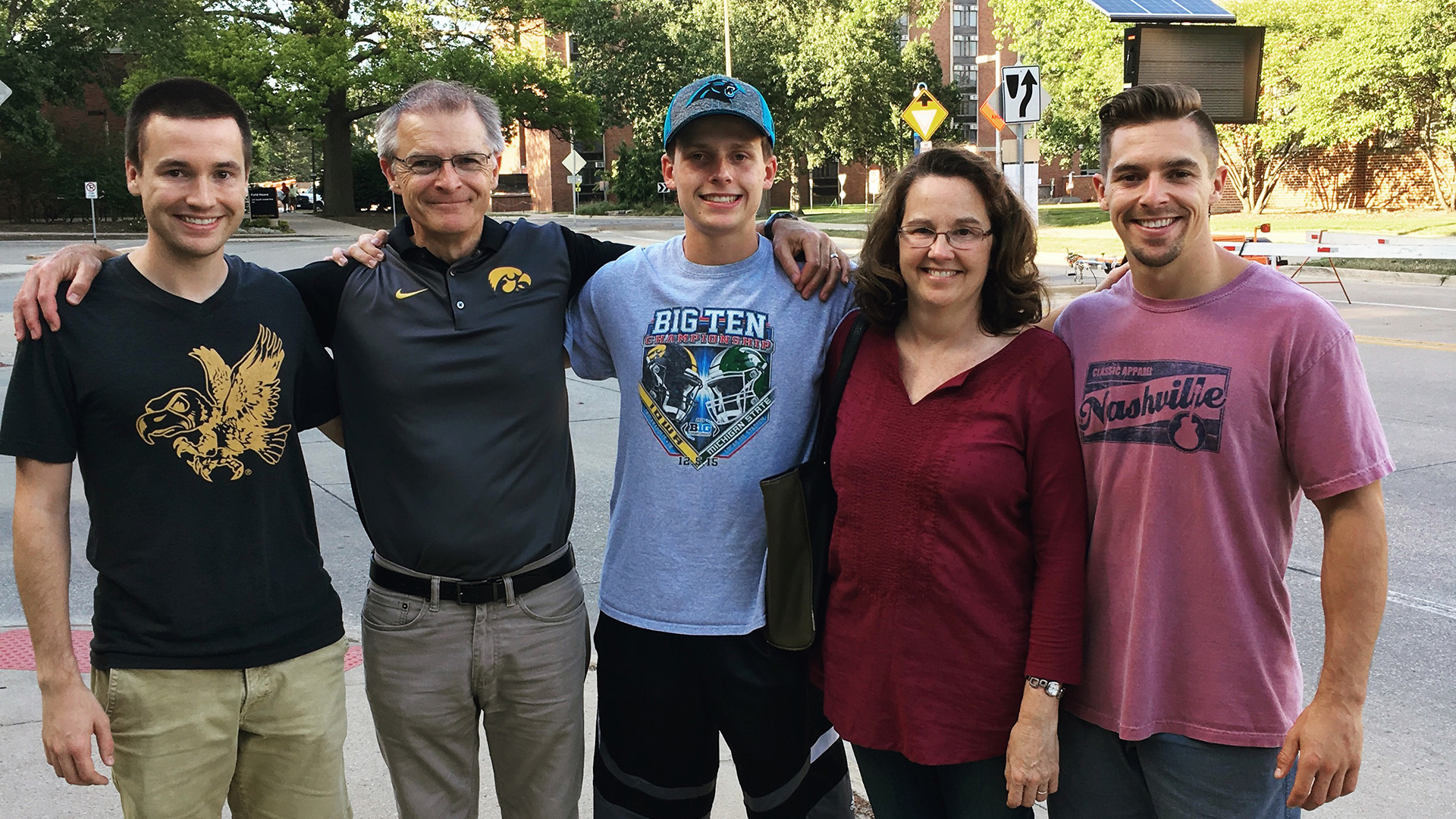
In addition to having an enthusiastic faculty, the UI biostatistics program places an emphasis on internships and research assistantships—something the Seedorffs say sets Iowa apart.
“I got to spend two-and-a-half years working in the clinical trial center and seeing that side of the world and then another two-and-a-half years working on a technology education product called Elements of Success,” says Nick, who planned to go to medical school before he fell in love with biostatistics. “There is great diversity in Iowa’s research assistantship offerings.”
Michael says that breadth of opportunity allowed him to plug in to his specific interests.
“As an undergrad, I was very conflicted about what I wanted to do for grad school—a degree in linguistics or stats or computer science—and biostats ended up being a perfect melding of all my interests,” he says. “There are a lot of different ways you can plot your direction as a biostats student. Iowa was able to get me a research assistantship in a psycholinguistics lab housed at University of Iowa Hospitals & Clinics.”
Michael and Nick, both living in Northern California, say they are in their dream jobs; Jacob hasn’t settled on a job but is intrigued by data science and research. Jacob Oleson, professor and director of graduate studies in Iowa’s biostatistics department, says graduates can pursue careers in a wide a range of industries and that the Seedorffs represent Iowa well.
“These three brothers are not the same person—they are diverse in their interests and their backgrounds—and they came to biostatistics from different paths,” Oleson says. “We currently have 14 different undergraduate majors represented in our graduate program—a mix of students from the mathematical and statistical side and others who are more on the science side, like biology, psychology, or chemistry. Some students who have a math background and enjoy the science want to use math to tell a story about the science. Others were science majors whose favorite part of being a scientist was being able to analyze data, and they want to learn more about how to analyze data. Biostatistics brings both of those groups together.”
